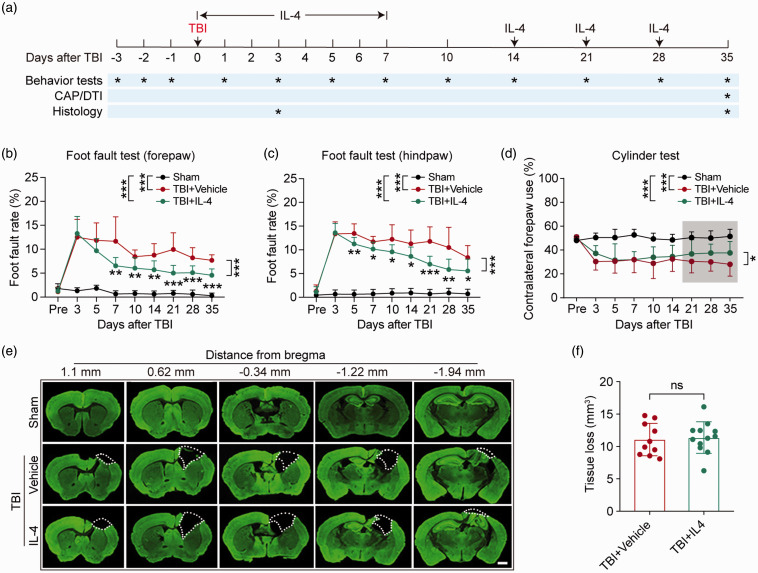Figure 1.
Delayed intranasal IL-4 delivery promotes long-term sensorimotor recovery after TBI. Mice received intranasal administrations of IL-4 (50 μg/kg) or vehicle starting at 6 h after CCI and repeated on days 1–7 (daily) and then on days 14, 21, and 28 after CCI. Long-term sensorimotor function and brain tissue loss were analyzed. (a) Illustration of experimental timeline. (b–c) Foot fault test. The foot fault rates of the left forelimb (b) and hindlimb (c) were quantified. (d) Cylinder test. Contralateral forepaw use was calculated. The shadowed region indicates the portion of data that displayed significant differences (21–35 days). (e) Five coronal sections spanning from 1.10 mm anterior to Bregma to 1.94 mm posterior to Bregma were stained for the neuronal somatodendritic marker MAP2 at 35 days after TBI. The dashed line defines the border of tissue loss. Scale bar = 1 mm. (f) Blinded quantification of volume of tissue loss, defined as the viable tissue volume of the ipsilateral hemisphere subtracted from the viable tissue volume of the contralateral hemisphere. *p< 0.05, **p< 0.01, ***p< 0.001, ns: no significance. A two-way repeated measures ANOVA with Bonferroni post hoc was used in b–d. Unpaired t test was used in f. Foot fault test: n = 8 in sham group, n = 12 in TBI+Vehicle and TBI+IL-4 group. Cylinder test: n = 10 per group in cylinder test. Tissue loss: n = 10 in TBI+Vehicle group, n = 12 in TBI+IL-4 group.

